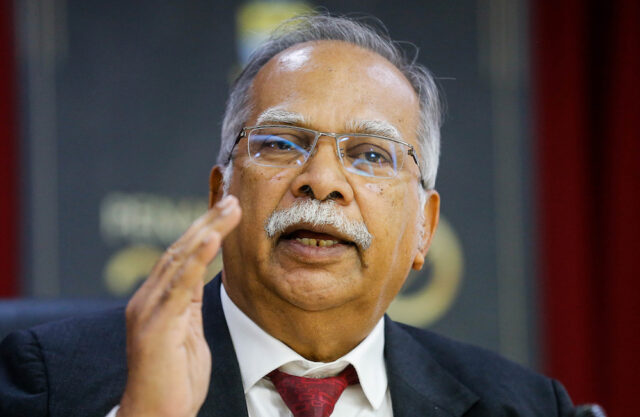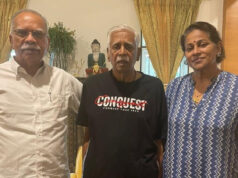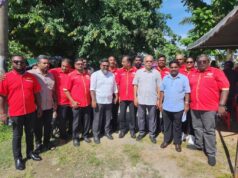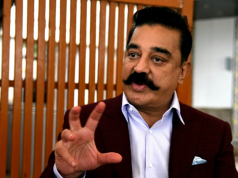Whatever happened to the tear-drop island state of Sri Lanka? Once described as a successful multi-ethnic model of development, Sri Lanka’s governance and economy seem to be in tatters.
Whatever happened to the powerful oligarchy of the Rajapakse clan?
All the ministers except the president Gothabaya have resigned.
The genesis of cronyism and nepotism started way back in the 1970s, long before the Rajapakse clan appeared on the scene.
Once a well-known International magazine said that “family planning” was nowhere more complete than Sri Lanka. Imagine this was before the rise of the Rajapakse family. Cronyism and nepotism became much more worse under the Rajapakse family.
With the rise of the Rajapakse family, leading to the presidency of Mahinda, his brother Gothabaya as the defence secretary, Basil as the finance minister and not to speak of other family members in high government positions, the stage was set for the political and economic doom of the country.
Before the Rajapakse family could extend their tentacles far and wide, the civil war had to be prosecuted against the Liberation Tigers of Tamil Eelam (LTTE), the Tamil national liberation organisation.
The more than three decades of war was brought to a closure in 2009 with the defeat of the LTTE and the death of more than one hundred thousands people, mainly Tamils in their traditional homeland of the north and east of the country.
Mind you the LTTE was defeated not by the sole efforts of the Sri Lankan government but with the assistance of 20 countries including India.
The defeat of the LTTE was largely credited to the family of Rajapakse, particularly the brothers, Mahinda and Gothabaya.
The family soon became pride of the Sinhala-Buddhist nation of Sri Lanka.
In other words, they became untouchable. By equating the Tamil population with the LTTE, the former became the target of the religious and racial extremism of the government.
Tamil lands in the north and east were occupied by the armed forces and their traditional livelihood such as agriculture and fishing were affected.
International calls for the prosecution of war crime against individuals who managed the war went unnoticed by the jingoistic government.
The Rajapakse family was so emboldened by the victory not so much against the LTTE but against the ethnic minority Tamils. Essentially, it was war by the majority against the minority.
It was not that other minorities such as Muslims were spared the wrath of the Sinhala-Buddhist hegemony. Having taken care of the Tamil minority problem, the Rajapakse family turned to the governance of the country.
Since they were politically untouchable, they pretty much moved in the direction of a more complete “family planning”. After a short gap, Gothabaya became the president and without surprise, his older brother, Mahinda became the prime minister.
It did not take much time to ensure family, other brothers, nephews and grandchildren were given high government posts. Extreme cronyism and nepotism soon obtained nefarious results in the form of mounting debts, the devaluation of the currency, the rise of inflation, mounting debts to China and the attempt by the government to seek the assistance of the International Monetary Fund (IMF) and others.
As though these were not enough, supply of essentials, food, gas and others angered the ordinary people. It was the suffering of ordinary people that turned the tide against the government.
People had to stand in long lines to buy staple items and fuel under conditions of terrible shortage.
The government was simply unprepared to contain the anger and the frustration that spiralled out of control. It was in this context of mounting anger, frustration and massive disappointment that people, of all races and religions, rose to demand the resignation of the government, manned by the Rajapakse family.
It was spontaneous outburst totally unprecedented in the history of the country. It was just a matter of time, before the entire cabinet was forced to resign, leaving alone the president, Gothabaya.
In fact, his hold on the presidency is becoming untenable as days go by. The ordinary people had enough, they want the proverbial pound of flesh.
In a matter of less than two decades, the Rajapakse government, hailed as the best government of the Sinhala-Buddhist nation, was brought down by ordinary people on the streets.
Mismanagement, high degree of corruption, currency depreciation, the lack of food and fuel caused the uprising.
The Sri Lankan case illustrates a simple truth of the limits of religious and ethnic extremism.
The pursuit of nationalism to the exclusion of minorities and others, might not be good enough to to address the bread and butter issues faced by ordinary people.
It got to the head of the Rajapakse oligarchy that since they were the war heroes who defeated the Tamils, they could do nothing wrong. It really didn’t take long for the very people who hailed them as heroes to denounce them as zeroes in asking for the mass resignation of the ministers.
The recent Sri Lankan debacle might hold important lessons for countries multi-racial and multi-religious countries like Malaysia.
The pursuit of exclusionary policies to benefit a majoritarian segment might be counterproductive in the long run.










